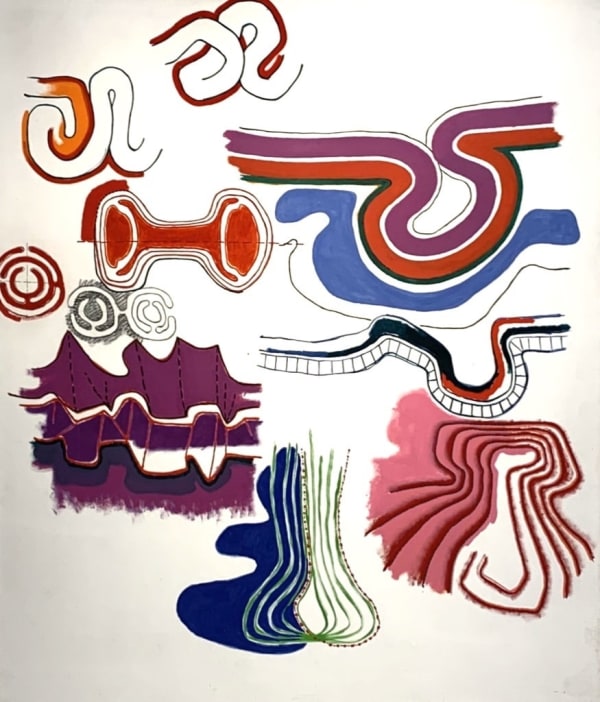Harold Cohen BRITISH, b. 1928
Harold Cohen was born in London in 1928. He studied at Slade School of Fine Art where he also taught for several years after completing his degree. During the 1960s he exhibited at the Venice Biennale (1966), Documenta 3 (1964), the Paris Biennale, the Carnegie International and many other international shows; in 1965 the Whitechapel Art Gallery in London organized an exhibition dedicated to him. He exhibited regularly at the Robert Fraser Gallery in London and the Alan Stone Gallery in New York.
In 1971 Cohen spent time at Stanford University’s Artificial Intelligence Lab and his fascination with artificial intelligence led him to create the AARON programme, a machine-based simulation of the cognitive processes underlying the human act of drawing. He showed this project at the Tate, the Brooklyn Museum, the San Francisco Museum of Modern Art, Amsterdam’s Stedeljik Museum as well as science centres in the US, Europe and Japan.
The painting exhibited here is one of Cohen’s most seminal works. It was painted at a time when London had begun to rival New York as a cultural centre for young Pop artists, Cohen belonged to an emerging generation of American-influenced abstract painters that included Richard Smith, Robyn Denny and Harold’s own brother Bernard. It was exhibited at the famous Whitechapel retrospective of his work in 1965 and is listed in the exhibition catalogue as no 41. It is perhaps one of the very best large works by Cohen, it exemplifies all the qualities that propelled him to be one of the leading British artists of the 1960’s. The British Arts Council and The Tate and many international museums and collections hold examples of his work.


